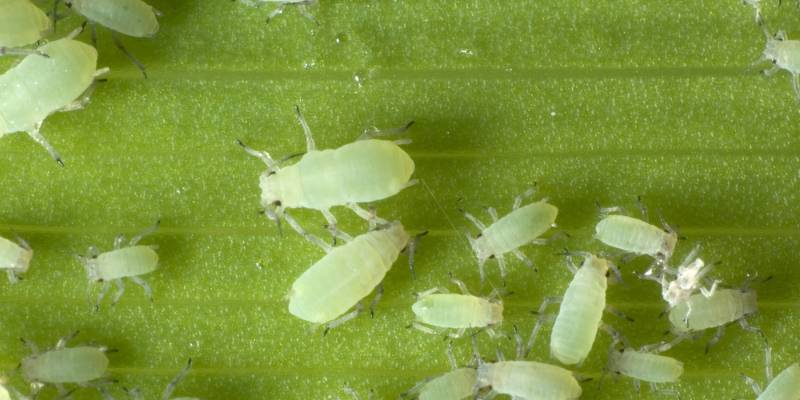Aphids are a serious garden pest, causing enormous damage to human crops worldwide. They wreak havoc both by spreading disease and physically weakening and deforming plants, even killing plants when infestations are serious.
Aphid populations are not static, however, and each year aphids reproduce in step with the local temperature and day-length. In tropical places and in heated greenhouses, where temperatures remain warm year-round, aphids can continue to reproduce asexually for many years. In places with cold winters, however, aphid populations follow a seasonal pattern that begins in the spring.

The typical aphid life cycle begins when aphid eggs hatch as temperatures warm in the spring. These eggs hatch into a population of entirely females. Once an aphid population has been established the female aphids begin rapidly reproducing through a method of asexual reproduction called parthenogenesis. This means that the females can produce offspring without mating with male aphids.
Aphids are one of the few insect species that give live birth, only laying eggs in the fall. Female offspring produced asexually are essentially born pregnant, with embryos developing parthenogenically within them, allowing aphid populations to build up rapidly in late spring and early summer.
As aphid populations increase on a given plant, or as host plants begin to weaken, the females begin feeling stressed. This stress causes them to begin giving birth to winged females, who are able to fly out and search for new host plants. Once they have found a suitable host they begin giving birth to wingless females, who colonize the host and further increase aphid populations.
Before autumn most aphids will asexually produce at least several generations. Some species can even produce as many to 40 generations in a single season, reaching epidemic proportions in suitable conditions. In temperate climates, however, the arrival of winter brings cold temperatures and killing freezes, which is why aphids will then switch up their reproductive strategy.
Aphid sexual reproduction begins in the fall, as the days become shorter and the temperature begins to drop. Female aphids begin asexually giving birth to winged females and winged males, who fly off the host plant and seek mates. After mating the females will deposit the eggs that will overwinter, hatching into the first females in the spring. The adult aphids die with the frosts, which is why aphids are not a serious threat to most winter crops.
The seasonal nature of aphid damage can point us in the direction of developing better aphid control measures. Rather than attempting control measures after aphid populations have spiraled out of control we can focus our attention on suppressing their numbers and preventing further aphid dispersal into our crops and gardens.
Aphid control, be it the release of natural predators, the application of pesticide, or the use of horticultural soap or oil, is cheaper, safer, and better for the environment when done in accordance to the natural ebb and flow of aphid populations over the seasons.
